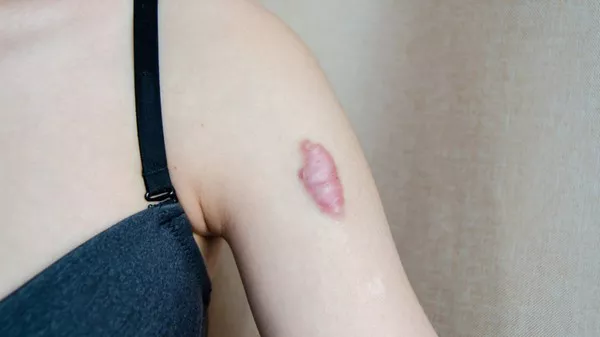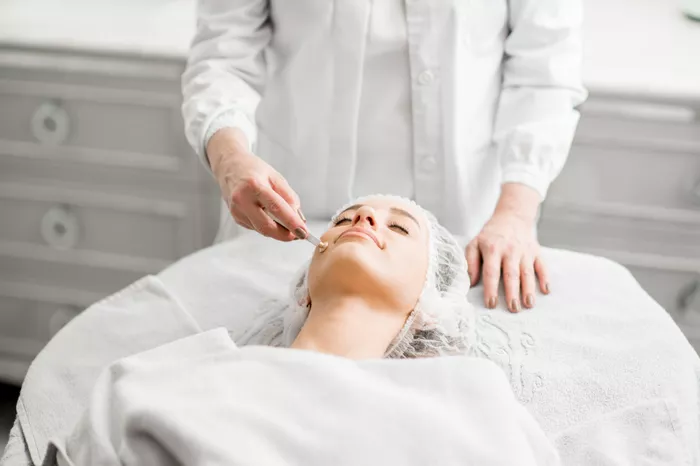Embarking on the journey to address hypertrophic scars, individuals often seek a blend of effective and natural solutions. What home remedies for hypertrophic scar treatment harness the power of nature to promote skin healing and reduce scar prominence? This comprehensive guide delves into the realm of home-based approaches, unraveling the potential of various ingredients, techniques, and practices in hypertrophic scar management. From commonly found kitchen staples to specialized botanical extracts, individuals can discover an array of remedies designed to enhance skin health and contribute to the reduction of hypertrophic scars.
Understanding Hypertrophic Scars
Before delving into home remedies, it’s essential to grasp the nature of hypertrophic scars and the intricacies of their formation. How do hypertrophic scars differ from regular scars, and why do they develop? Hypertrophic scars arise from an overproduction of collagen during the healing process. Unlike regular scars, hypertrophic scars are raised and may appear red or pink. They often result from injuries, burns, surgical incisions, or other trauma to the skin. While hypertrophic scars don’t extend beyond the boundaries of the original wound, their prominence can be a source of concern. Exploring home remedies becomes an avenue for individuals to actively participate in their scar management journey.
Aloe Vera
Among the notable contenders in the realm of home remedies for hypertrophic scar treatment, Aloe Vera stands out as a natural and versatile option. How does Aloe Vera contribute to scar healing, and what makes it a popular choice for hypertrophic scars? Aloe Vera boasts anti-inflammatory and moisturizing properties, creating an optimal environment for scar tissues to heal. The application of Aloe Vera gel directly onto hypertrophic scars can soothe the skin, potentially reducing redness and promoting a more even skin texture. Its natural composition makes it a gentle yet effective remedy, aligning with the goal of nurturing the skin back to health.
Vitamin E
Delving into the realm of essential nutrients, Vitamin E emerges as a potential ally in the quest for hypertrophic scar treatment at home. How does Vitamin E contribute to skin health, and in what ways can it be incorporated into a home-based scar care routine? Vitamin E is renowned for its antioxidant properties, which play a crucial role in neutralizing free radicals that can impede the healing process. Applying Vitamin E oil or using Vitamin E-rich creams directly on hypertrophic scars provides nourishment to the skin, potentially aiding in scar softening and promoting a more supple appearance. However, it’s essential to exercise caution and perform a patch test, as some individuals may experience skin irritation.
Honey
Venturing into the realm of natural sweetness, honey emerges not only as a culinary delight but also as a potential home remedy for hypertrophic scar treatment. How does honey’s antibacterial and anti-inflammatory properties contribute to scar care, and how can it be effectively applied? Honey’s inherent properties make it a valuable addition to scar care routines. Its antibacterial nature aids in preventing infections, while its anti-inflammatory effects may assist in reducing swelling and discomfort associated with hypertrophic scars. Applying a thin layer of honey directly onto the scar or incorporating it into homemade masks offers individuals a sweet yet potent option for scar management.
Onion Extract
For those exploring botanical remedies, onion extract emerges as a notable contender in the realm of hypertrophic scar treatment at home. What compounds in onion extract contribute to scar reduction, and how can it be effectively utilized for scar care? Onion extract contains bioactive compounds, such as quercetin and alliinase, known for their potential anti-inflammatory and scar-reducing properties. Commercially available onion extract gels or creams can be applied topically to hypertrophic scars. While research is ongoing to fully understand the mechanisms, early studies suggest promising results in scar texture improvement. As with any home remedy, individuals are encouraged to perform patch tests and monitor skin reactions.
Silicone Gel
Transitioning to a more modern yet home-applicable remedy, silicone gel emerges as a clinically recognized option for hypertrophic scar treatment. How does silicone gel contribute to scar reduction, and how can individuals integrate it into their scar care routine at home? Silicone gel sheets or gels create a protective barrier over scars, helping to regulate collagen production and hydration. This contributes to a more favorable healing environment, potentially leading to flatter and softer scars. While silicone gel is often available in commercial products, individuals can adhere to a consistent application routine at home, following recommended guidelines for optimal results.
Massage and Moisturization
Beyond specific remedies, incorporating fundamental practices like massage and moisturization into a holistic scar care routine at home can yield valuable benefits. How do massage and moisturization contribute to scar management, and what techniques can individuals employ? Gentle massage of hypertrophic scars helps break down collagen bundles, potentially leading to a softer and more pliable scar. Utilizing hypoallergenic and fragrance-free moisturizers keeps the scar tissue hydrated, reducing dryness and promoting overall skin health. These practices are foundational elements of scar care, emphasizing consistent and mindful engagement with the affected skin areas.
Lemon Juice
Exploring the vibrant realm of citrus, lemon juice emerges as a potential home remedy for those seeking to address hypertrophic scars. How does the acidity of lemon juice contribute to scar brightening, and what precautions should individuals consider? Lemon juice, with its natural acidity, is believed to promote exfoliation and brightening of the skin. When diluted and applied topically to hypertrophic scars, lemon juice may assist in reducing hyperpigmentation. However, it’s crucial to exercise caution, as the acidity can potentially irritate the skin, especially in individuals with sensitive skin or those prone to allergies. Dilution and patch testing are essential steps in ensuring safe application.
Green Tea Extract
For those seeking antioxidant-rich solutions, green tea extract emerges as a home remedy with potential benefits for hypertrophic scar treatment. What antioxidants does green tea contain, and how can individuals harness its properties for scar care? Green tea is rich in polyphenols, particularly epigallocatechin gallate (EGCG), known for its antioxidant and anti-inflammatory effects. Applying green tea extract topically or utilizing green tea-infused products may contribute to mitigating inflammation and supporting skin healing. As with any remedy, individual responses vary, and consistent application and observation are key to assessing effectiveness.
Cocoa Butter
Transitioning to a more indulgent remedy, cocoa butter holds promise as a home remedy for hypertrophic scar treatment. How does cocoa butter contribute to scar care, and in what ways can individuals incorporate it into their routine? Cocoa butter, derived from cocoa beans, is rich in fatty acids and antioxidants, offering intense hydration to scar tissues. Regular application of cocoa butter onto hypertrophic scars may assist in improving skin elasticity and texture. While its scent and texture make it a luxurious choice, individuals should be mindful of potential allergic reactions and perform patch tests before widespread use.
Conclusion
In conclusion, home remedies for hypertrophic scar treatment provide individuals with a diverse array of options to actively participate in their scar management journey. From the soothing properties of Aloe Vera to the antioxidant-rich allure of green tea extract, nature offers an extensive toolkit for promoting skin healing and reducing scar prominence. It’s crucial to approach home remedies with a mindset of experimentation and observation, recognizing that individual responses may vary. Additionally, consulting with healthcare professionals ensures that chosen remedies align with overall health considerations. As individuals explore and incorporate these home-based approaches, they embark on personalized paths to scar healing, nurturing their skin back to health with the potent and diverse offerings found in nature’s pharmacy.
[inline_related_posts title=”You Might Be Interested In” title_align=”left” style=”list” number=”6″ align=”none” ids=”3958,3926,3924″ by=”categories” orderby=”rand” order=”DESC” hide_thumb=”no” thumb_right=”no” views=”no” date=”yes” grid_columns=”2″ post_type=”” tax=””]

































